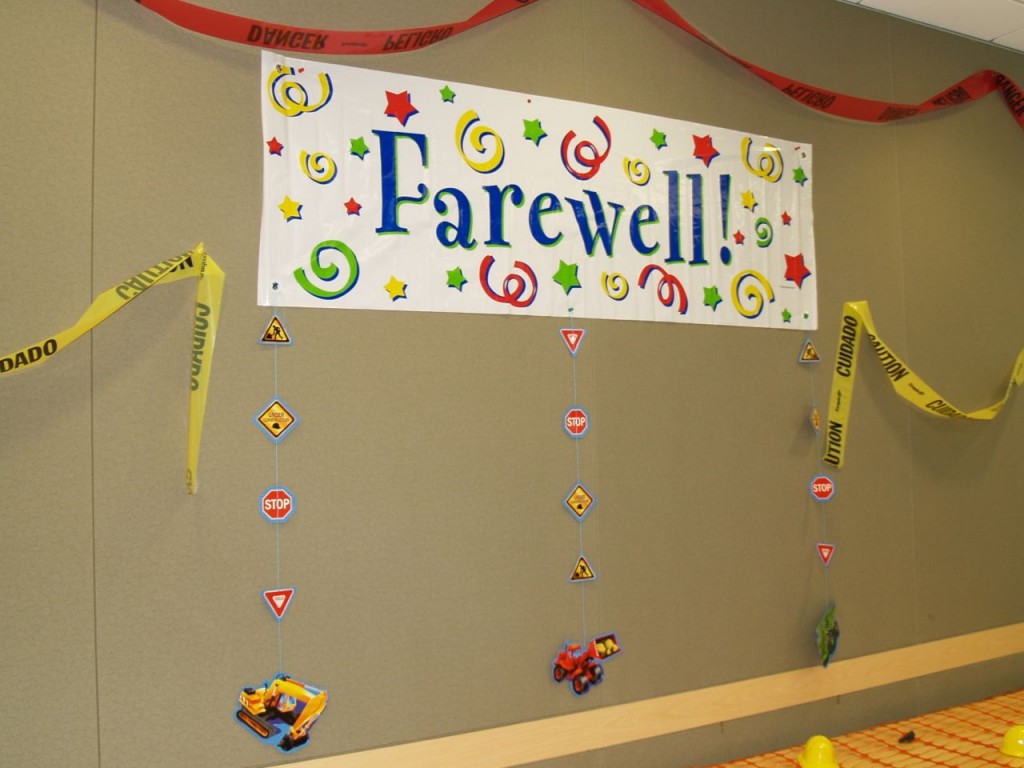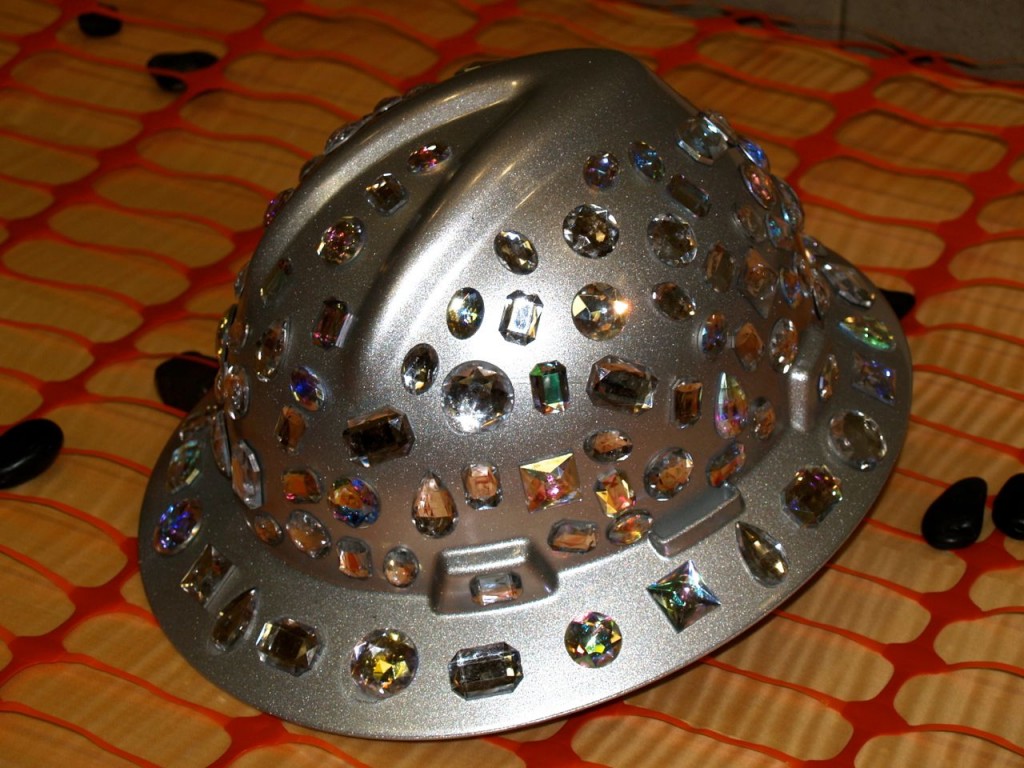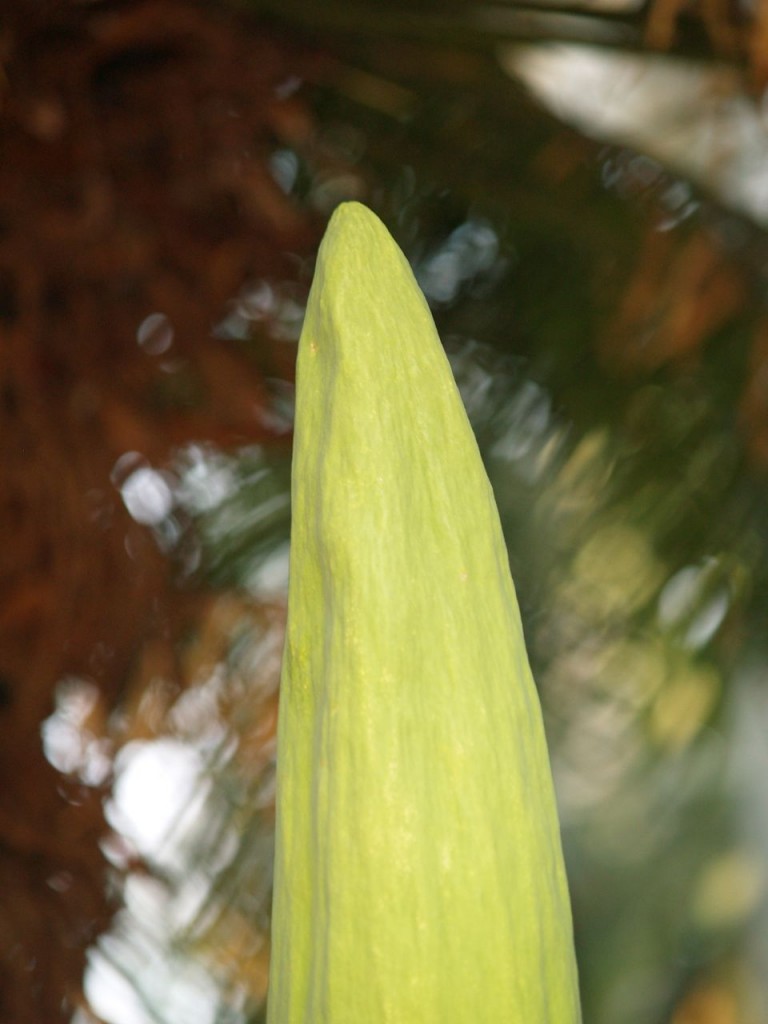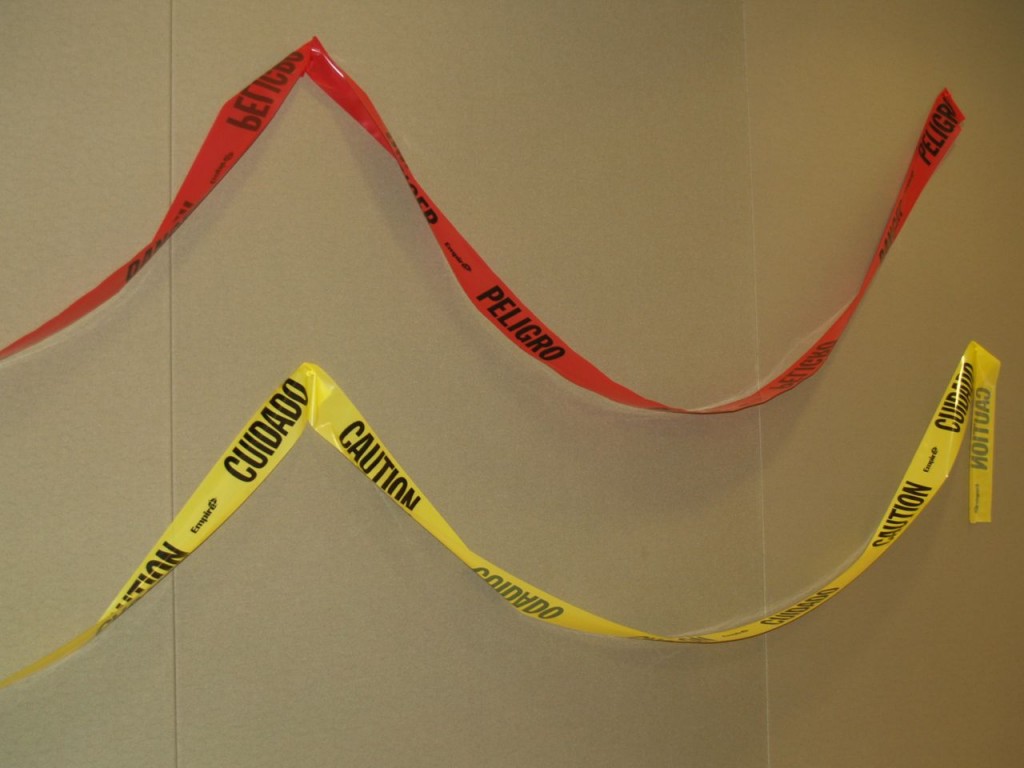For the fifth day in a row, I present my photos of Washington, DC’s US Botanical Garden’s corpse flower. As always I try to take photos from the same spots, so that I can compare to photos from previous day’s visits. To best see the changes, compare the photos below with my photos from July 11, July 12, July 13, and July 14. All the photos below were taken from approximately the same locations as yesterday. The clearest changes are still with the green petals that covered the spathe. In the first photo below, the green petal on the left has now completely collapsed. The green petal on the right side has now shriveled to about three inches or so below the spathe fringe, which is another inch or two below where it was yesterday. The spathe fringe seems to be as tight to the spadix as before. While it is not on USBG’s website, I read in a news article that it is still growing. Because there is little reference points in my photos, any height or width growth has been hard for me to detect. However, it occurred to me today when taking the photos, that I have been taking the photos further and further away everyday to get the entire plant in the photo. However as I have an adjustable lens, to a certain degree I can do that with just adjusting the lens. Also, it is easiest to tell if you go back to the July 11 photos, but the spadix has been slowly growing taller. Look at the height of the spadix past the the fringe of spathe. It is definitely getting taller. Finally, there still is no smell.
Month: July 2013
USBG Corpse Flower: July 14
At this point, I think I may be competing for, if not winning, the title of Washington, DC’s most obsessed corpse flower fan. Everyday I visit the US Botanical Garden’s corpse flower and try to take photos from the same spots, so that I can compare to photos from previous day’s visits. To best see the changes, compare the photos below with my photos from July 11, July 12, and July 13. All the photos below were taken from approximately the same locations as yesterday with the exception of the final photo of the very top. I changed locations with it because the light was giving me trouble, especially for the top, which is rather featureless. The clearest changes are still with the green petals that covered the spathe. In the first photo below, the green petal on the left is now falling. Yesterday it was upright at an angle. The green petal on the right side has now shriveled to about two inches or so below the spathe fringe, which is another inch or two below where it was yesterday. The spathe fringe seems to be as tight to the spadix as before. As for what most people seem to most curious about, the smell, there still is no smell.
USBG Corpse Flower: July 13
My photographic coverage of US Botanical Garden’s corpse flower continues. To best see the changes see my photos from July 11 and July 12. Once again, I have tried to take photos from a similar vantage point as before to better examine the changes. The first five photos in this post are taken from close to the same place as July 11 and 12. The last two are photos from new views than posted before. The front green petal seen in the first photo has almost completely collapsed, but on July 12 it was upright at an angle. The tallest green petal is clearly collapsing and is one of the most visible changes. On July 11, it reached about three inches above the spathe fringe, on July 12, it reached only about one inch above the spathe fringe, and today it even with or slightly below the fringe.
Updated to add: As I keep getting asked this, there is no smell yet. My understanding is that it only starts to smell or stink after the spathe opens. The smell attracts pollinators such as carrion beetles that like that smell. The pollinators only need to be attracted once the spathe opens, and the flowers that are hidden by the spathe are accessible.
USBG Corpse Flower: July 12
My obsession with photographing the US Botanical Garden’s corpse flower continues. My photographs from July 11 can be found here. I have tried to post photographs from a similar location as yesterday, so the changes can be seen easier. Today I stood in front of it looking at my photos from yesterday on my phone using the background as reference to try to view it from the same angles. I could definitely see changes. The fringes of the spathe (the section that will unfold and form the false “flower”) appear to be as tightly wrapped around the spadix (yellow-green middle spiky section) as yesterday, perhaps having loosened just a tiny bit. However, the green petals that covered the spathe have definitely moved further away from it. [Note: If I have named any of these parts wrong, I would appreciate it if someone would correct me. I am pretty sure I have spathe and spadix correct, but I don’t know if petals are the correct name for the green parts at the base.]
The below photo was taken on July 12 and added to blog post on July 13. I am adding it because I am posting a similar photo on the July 13 blog post, and this photo can then be used for comparison.
USBG Corpse Flower: July 11
The United States Botanical Garden (USBG) has a corpse flower otherwise known as titan arum (Amorphophallus titanum) that is currently in the process of blooming. It is called a corpse flower because when it blooms it smells rather bad, supposedly like rotting flesh. Corpse flowers bloom rather infrequently, as in a few years to a few decades apart. The one currently in bloom at USBG is about seven years old and has never bloomed before. Once a corpse flower is in full bloom, the bloom only lasts 24-48 hours.
I have always wanted to see a blooming corpse flower, so I got really excited when I found out that there is one in town. I took a few hours off today, so I could go see it. I plan to go down there everyday if possible to take photos of it. If you are interested, check back for updated photos.
Engineering Party Decorations
My boss retired today. I am going to miss her very much. She was a great boss and a great coworker. There were projects on which I very much worked with her and not for her. She is very knowledgable, smart, and great at communicating science to non-scientists. My workplace is losing a great worker. My coworkers and I wanted to throw her a great party before she left. Somehow I ended up planning most of the party decorations. Most people would probably think a nerdy engineer would make a bad party decorator, and they most likely are correct. However my boss is a geologist, and I wanted party decoration that honored her and her work. Thus, most of the party decorations came from Home Depot. Yes, seriously. I wanted to go with a geology and engineering theme, so where else am I going to buy stuff? What kind of party decorations can you get at Home Depot? Read on.
 Table cloth made from orange safety fence. In some places, this is known as magic orange fence. It is “magic” because on one side of it, you need personal protective equipment (PPE) such as respirators, and on the other side, you are fine. Sometimes, the fence is just used to keep chickens, goats, dogs, etc. off the construction site. The table decorations are rocks and little yellow hard hats that coworkers found at various party and other type stores.
Table cloth made from orange safety fence. In some places, this is known as magic orange fence. It is “magic” because on one side of it, you need personal protective equipment (PPE) such as respirators, and on the other side, you are fine. Sometimes, the fence is just used to keep chickens, goats, dogs, etc. off the construction site. The table decorations are rocks and little yellow hard hats that coworkers found at various party and other type stores.
Streamers made from yellow caution tape and red danger tape.
 The banner and construction equipment mobiles came from a party supply store. My coworker who bought them told me it was difficult to shop for my theme, but she found the construction equipment mobiles.
The banner and construction equipment mobiles came from a party supply store. My coworker who bought them told me it was difficult to shop for my theme, but she found the construction equipment mobiles.
 The coworkers in my branch and I decided to give our boss a few gag gifts. Someone suggested making our boss where a tiara for the party. I said it would be more appropriate for her to wear a jeweled hardhat, so I made this. It is a regular hardhat with four-point suspension that meets ANSI and OSHA standards. I just spray-painted it silver and then glued plastic gemstones to it. Just because you have to wear PPE doesn’t mean you can’t have style or bling.
The coworkers in my branch and I decided to give our boss a few gag gifts. Someone suggested making our boss where a tiara for the party. I said it would be more appropriate for her to wear a jeweled hardhat, so I made this. It is a regular hardhat with four-point suspension that meets ANSI and OSHA standards. I just spray-painted it silver and then glued plastic gemstones to it. Just because you have to wear PPE doesn’t mean you can’t have style or bling.
After people looked at my decorations and hardhat, I was told several times today that I think outside the box. I take that as a compliment. My box is probably on another planet in fact.
Mu is Not U
Time for another blog post where I try to improve science grammar.
This is the lower case Greek letter mu: μ. This is the lower case Latin letter u: u. Latin letters are, of course, what are used in the English alphabet as well as many, many other languages. While μ and u look similar, they are different. The Greek letter mu, uppercase Μ, is closer to the Latin letter M. The Latin letter U (uppercase, or u, lowercase) is more related to the Greek letter Upsilon (uppercase Υ, lowercase υ).
So now that I got that out of the way, when it comes to science in particular, μ and u are NOT interchangeable. In the International System of Units (SI), otherwise known as the Metric system, μ is the symbol used to represent the prefix micro-. “μ” can easily be added into a document using a insert symbol compound. It is an easy procedure, and there is no need to be lazy and just use “u”. “u” does not mean micro-. It is wrong. Don’t do it.
Fitness and the Fitbit
I’ve had a Fitbit for about nine months now, and I get asked enough questions about my thoughts on it that I thought it would be most efficient just to write a blog post on it. Let me say clearly, this is not a sales pitch for Fitbit. There are other personal activity trackers out there, and here is a good summary and review of them. I have never tried any other one, but if you decide you want a personal activity tracker, research all the different ones.
First, for those who don’t know what a Fitbit is, it is essentially a really high tech pedometer. It keeps track of the number of steps you take and how quickly you take them, so it can tell the difference between when you slowly walking, walking briskly, or running. I have a Fitbit One, which can also determine how many flights of stairs I have climbed with a very tiny, sensitive altimeter. It calculates how many total calories you have burned by how active you have been, your basal metabolic rate, and your weight. The Fitbit has a simple display that shows that days total steps, stairs, miles, and calories burned. It is its ability to sync to the Fitbit system via your computer or smart phone app that really makes it high tech though.
On the website and to a certain extent on the smart phone app, you can see not only the stats that the Fitbit displays but also much more detail. It has a graph showing you how active you have been throughout the day. You can see all your data ever collected. For example, I can see how active I was six months ago and at what time of day. If you enter your weight manually or you use their Aria scale, then you can see all your weight data. You can log activities like yoga, running, gardening, etc. The activity logging helps to better calculate calorie burning as Fitbit will not know how much you are using your arms or other activities than walking or running. I exercise regularly on my elliptical machine, and it doesn’t really record my movement on it all that well, and it also can’t tell what kind of resistance I am using. I use the activity timer on the Fitbit to record the time I am on the elliptical machine, and then I use that information to log the activity on the website. Fitbit has a large database of various activities and how many calories on average you burn doing them. It uses the information you log to calculate the calories burned during that activity and overrides what it had originally calculated based on your movements it recorded. The activity timer is also nice when you are running or walking because it will use it to calculate your pace for that time period.
The Fitbit website and smart phone app also lets you record everything you eat and drink to calculate the calories you have consumed. It has a large database of food and their nutritional information. It has information on raw ingredients like apples or skinless chicken breast, and it also has information on processed or prepared food from big name brands and large food chains. You can also enter information based on nutrition labels.
If you enter a weight loss goal, Fitbit will ask how fast you want to lose it or conversely what kind of weekly calorie deficit you would like to achieve it. That is, as most know, in theory, you will lose one pound of fat with a 3500-calorie burn to intake deficit. Thus, if you consume 3500 calories less than you burn each week or 500 calories a day, then you should lose a pound a week. I say “in theory” because as any dieter will tell you, it is really not that simple. If you gain muscle, you could lose fat but still gain weight. Also, there is water weight that comes and goes, and then there is simply the “I have no explanation why I haven’t lost weight or why I have lost weight.” As a chemical engineer, the seemingly laws-of-thermodynamics-defying energy balance on my body is very annoying. Anyway, back to Fitbit, if you set a weight loss goal, it uses the calorie burned data it calculates to let you know how many more calories you can eat that day if you also enter all the food you eat. This is updated each time it syncs with the Fitbit, so after you exercise, it will show you how many more extra calories you can eat with this new activity information. Conversely if you are incredibly sedentary one day, the how many more calorie you can eat information will continue to decrease through the day. For example, based on my weight, my desired weight loss rate, and presumably my average daily activity level, each morning it starts out tell me I can eat about 2100 calories that day. As the day continues, if I keep a normal activity rate, i.e. walking here and there, the 2100 calorie will hold steady. If I sit like a lump all day, or the data just hasn’t synced, it might go down to 1700 calories or so. If I am quite active and then workout on my elliptical machine, it might say I could have eaten 3300 calories that day.
That’s a summary of what Fitbit does, and I would guess what other personal activity trackers do, so after using it for nine months, here’s what I think about it. I love it. Seriously, I love it. Granted, I am an unabashed data geek, so I love the data it gives me on myself. I think it is fairly accurate. In terms of tracking steps, it seems to need you to take at least five steps or so before it starts recording them. I have paced back and forth in a room with less than that, and it didn’t record anything. I am not sure of the exact number of steps it needs. It records flights of stairs accurately for the most part. It is supposed to record one flight of stairs for every ten feet climbed. In my two-story house, it is accurate, and in my office building, it records either one or two flights of stairs for every flight I climb because the floors are more than ten feet apart but less than twenty feet. When I notice that it is not recording stairs properly, I clean the Fitbit with some canned air. In terms of accuracy for calories burned, I have no idea how accurate it is. Based on my weight loss, I would say that it is probably fairly accurate.
As for whether wearing it everyday has changed my behavior, it definitely has. It is a reminder of how active or inactive I am. One of the reasons I first bought it was as I mentioned in a previous post, after moving to the DC area, I lost about 20 pounds without really trying because I adopted a pedestrian lifestyle. I bought the Fitbit to understand just how much walking I was doing. According to Fitbit and some other sources, you should try to take 10,000 steps and climb ten flights of stairs everyday. When I first started wearing the Fitbit, I found that I walked almost that much on a normal day without even exercising. I exercise almost everyday, so it became much more clear why I was losing weight. It was rather an eye opener when I went to Houston for Christmas a couple of months after getting my Fitbit. Even accounting for the fact that it was vacation, in Houston you drive everywhere. I had to make a very concerted effort to go for a walk in a park everyday to try to get 10,000 steps. Thus, it became clear just how much walking I do in DC relative to other places I have lived.
The constant count from my Fitbit has helped motivate me to keep increasing my activity level. If you are a competitive person, then friending people who also use Fitbit via the website may also help to motivate you, as on the website and app, how you rank in steps is shown in relation to your friends. Fitbit’s website also awards you daily and lifetime achievement badges for your steps, stairs, and weight loss. Each 5000 steps in a day gets you a higher badge and similar for the steps. This somewhat silly little badge icon on the website has managed to turn me into a 5 year old wanting another gold star, and I once found myself walking up and down my house’s staircase two times for no reason but for the sole purpose to get a higher badge. There is probably a bit of insanity or addiction that hits those of us who really get into the Fitbit. However the lifetime badges are a nice reminder of how much you have done. Because I also have Fitbit’s Aria scale, I get a badge for every five pounds that I lose, which is a rather nice reminder also.
My behavior has changed in very specific ways since I first got my Fitbit. About a month or so ago, I started going for walks during my lunch break at work. I actually really enjoy my walks now for various reasons, but it also gives me an extra half hour of brisk walking to add to my daily step count. At work, I also now regularly use the restroom on another floor to get a few extra steps and a flight of stairs. I now average about 18,000 steps per day, and I regularly climb over 25 flights of stairs per day. My pedestrian lifestyle has continued and increased. I enter everything I eat into the website, so it can tell me how many more calories I can consume. I have continued to lose weight.
Besides a continual reminder of your activity level, I think one way a personal activity tracker can help a person increase their fitness, is that it can help you figure out how you can achieve your goals whatever they are. There have been days when I have been pleasantly surprised that I have already accomplished quite a bit of steps, yet I haven’t gone for a walk or exercised. However, I was moving almost non-stop around the house doing housework, or I did several errands and parked at the back of the parking lots. Thus, the Fitbit helps me realize how small changes in behavior like parking at the far end of a parking lot can help to increase my fitness. Is that small action in itself going to cause me to lose a pound? No, but every little bit of lifestyle change can help.
A Fitbit is not a miracle cure for being overweight or a sedentary lifestyle. If you don’t care how inactive you are, then a constant reminder of your inactivity is not going to help. If you would like to become more active or figure out how much you can eat based on how active you are, then it can really help. It is a really nice tool, and like all tools, the usefulness and effectiveness of it, entirely depends on the user.
July 4th Fireworks
July 4th fireworks over the National Mall are always great. I found out about a spot on the Mt. Vernon trail where you can see the Lincoln Memorial, Washington Monument, and the Capitol all in one frame, so I headed there to take fireworks photos. It is a great location, but next time I will know better how high the fireworks go in relation to my photo frame and make adjustments, like putting the photo in portrait instead of landscape or using my regular lens instead of the zoom lens. No, I’m never happy with my photographs.
My Pedestrian Life
Over two years ago, I moved to the Washington, DC area, specifically Arlington, VA. I bought a house very close to many bus lines so that I wouldn’t have to use my car at all to get to work. I happily take public transportation, even if it takes a little longer, if it means I can avoid driving, especially during rush hour, especially in an area with awful traffic like Washington. In particular, I didn’t want to have to worry about driving in the snow that Washington sometimes gets. Four years of college in Colorado taught me that as a born and bred Southern, I don’t and shouldn’t drive in the snow. [To everyone in the Washington, DC metropolitan area: you’re welcome.]
The main goal was to not use my car to drive to work. My employer gives its employees a public transit subsidy, so not only do I save money not buying gas, but I also don’t have to pay the bus and subway fare. The buses run late enough that when I go to events in DC, I can just use public transit to get there and back. This is particularly nice as there is no parking in DC, and the streets are designed in some crazy way to confuse the British should they come invading again. Then as I started using public transportation, I found that it was just plain easier than dealing with driving and as importantly parking in the area. I started using public transportation on Sunday mornings as I explored churches. The church of which I am now a member is in DC and offers free valet parking. I still prefer public transit, even though it takes longer. Then I started using public transit more and more to do errands such as the grocery, especially when they could be done on my way home from work.
Funny thing happened as I used public transit more and more, my walking increased more and more. To a certain extent that should be obvious. Public transportation rarely drops you off at your exact destination or picks you up at your exact starting point so a little walking will be involved. However, I also started walking in lieu of public transportation. It is sometimes easier just to walk a certain distance than trying to figure out what bus will take you there, or particularly when the public transportation in question is Metro, it can be just plain faster to get there with your feet.
When I walk, I can explore. I can observe. When I drive, I can’t really explore anything other than the road. When I’m on the bus or the subway, I can explore a little bit but not to the degree when I am on foot. I am still new to the area, so exploration on foot helps me get to know the area. My office building is about 0.7 miles from my bus stop. There is a bus that runs between the two that I used to take. Sometime last year, I started walking the distance in the afternoon after work. Then I started walking it in the morning to the office also. Now I always walk it. There is no more exploring I can do on that route because I have walked it so many times, but now I people watch. As I try to arrive and leave work at the same time everyday, I have a regular time I normally walk to and from the office, and I have started to recognize other people who share some sort of routine during those same periods. Based on their uniforms, there is a uniformed federal police officer, a helicopter pilot, and another person, sometimes two, who have coffee together every morning in a fast food restaurant I pass. In the afternoon, there is a very serious looking federal agent in a suit (and his badge clipped to his belt) with a briefcase on wheels that I pass somewhere within a two block space if both of us are on schedule. I have fun finding people who have a routine and spotting them everyday. The area where I work has numerous military personal who work in nearby office buildings. I have started trying to learn what all the different insignia on their uniforms mean. This is even more complicated in this area as about once a week, I pass a non-US military person. Identifying their country and military branch is a challenge unto itself. Memorizing the uniform features so I can later try to identify it gives me a challenge to do on my walk.
Another really nice benefit of all my walking is it has made me a healthier person and caused me to lose weight. Last year by simply walking more and more and not bringing any more sweets home, I lost about 20 pounds. I didn’t change anything else, and I wasn’t really trying to lose weight. The weight loss was slow, over the course of about nine months. Don’t get me wrong, the weight loss was really nice, but every time I went to my physician, and she informed me I had lost more weight, it came as a nice surprise.
Now, I love my pedestrian life. I try to use my car as little as possible. I will always need it when I have to run an errand that is simply too inconvenient to walk or use public transit, or I need to transport something too big for either of those. However, whenever possible, I will try to go without it. Now it is like a challenge to see how I can gets things done without the car. A challenge that lets me explore and become a healthier person.










































